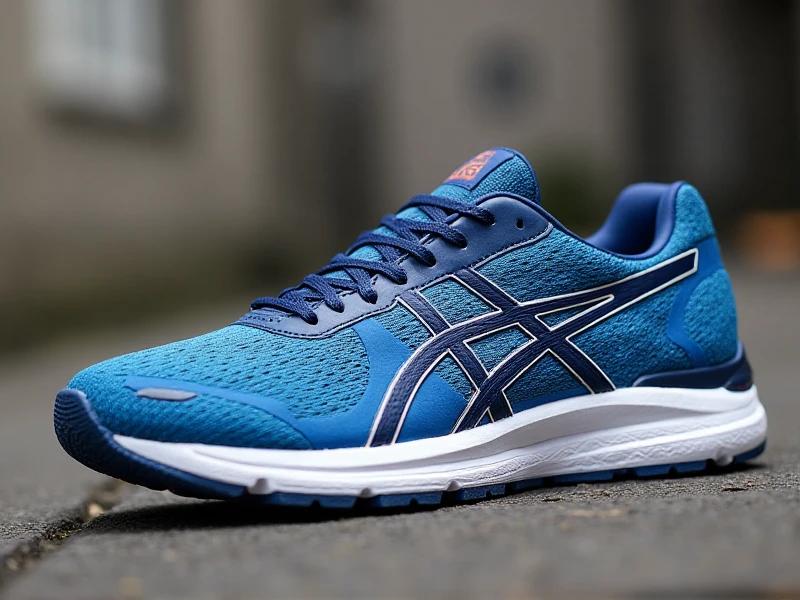The Ultimate Guide to Choosing the Best Men's Training Shoes for Peak Performance
2025-06-04

Selecting the right men's training shoes can make or break your workouts—whether you're hitting the gym for heavy lifts, crushing HIIT sessions, or conquering a circuit routine. Forget those generic sneakers; men's training shoes are designed specifically for lateral movements, multi-directional agility, and superior support to prevent injury. They're not just another pair of kicks; they're your foundation for building strength, speed, and endurance. In this guide, we'll dive deep into what makes these shoes essential, how to pick the perfect pair, and spotlight some top-rated options that have transformed athletes' performance globally. Trust us, investing in the best men's training shoes can elevate your fitness game from "just okay" to outstanding.
What Exactly Are Men's Training Shoes?
Contrary to popular belief, men's training shoes aren't the same as running shoes or basketball kicks. While running shoes prioritize forward motion cushioning, training shoes focus on versatility. They're built for dynamic movements—think quick pivots, jumps, lifts, and sprints on any floor surface. Key features include reinforced outsoles for grip, cushioned midsoles for impact absorption, and a lightweight upper that offers breathable support without restricting your feet. Many also have flexible torsional zones to handle cross-training routines effortlessly. Brands design them to adapt to various exercises, from box jumps and burpees to barbell squats. If you're serious about fitness, men's training shoes are non-negotiable gear.
Top Benefits of High-Quality Men's Training Shoes
Investing in premium men's training shoes pays off in spades during workouts. Here's why they're worth every penny:
- Enhanced Stability and Support: The low-to-ground design helps maintain balance during lifts, reducing risks like ankle rolls. Sidewalls and heel counters keep your foot anchored, even during explosive moves. No more slipping mid-squat!
- Superior Shock Absorption: Cushioning tech, such as Nike React or Adidas Boost foam, minimizes stress on joints. This protects against knee pain or shin splints, letting you train harder for longer.
- Durability for Rugged Routines: Unlike everyday shoes, men's training shoes use robust materials like rubber outsole compounds to withstand abrasion from mats or weights. They'll last seasons without falling apart.
- Versatility Across Workouts: One pair handles HIIT, lifting, agility drills, or functional training seamlessly. This cost-effective approach saves you from buying multiple specialized shoes.
- Breathability for Comfort: Mesh uppers wick sweat away, keeping feet cool and dry—essential for intense sessions where ventilation is key.
Real users rave about how men's training shoes boost their confidence. As marathoner-turned-lifter Jake Miller puts it, "Switching to dedicated training shoes cut my recovery time by half and upped my agility 20%."
Leading Brands and Models to Consider
When shopping for men's training shoes, established brands lead the pack with innovative technology. Here are some crowd-favorites:
- Nike Metcon Series: Renowned for its versatility, the Metcon offers unbeatable stability. The Metcon 8 features an aggressive herringbone outsole for grip and heel clip for rope climbs—ideal for CrossFit fanatics.
- Adidas Powerlift 5: Built for heavy lifting, this model has a rigid chassis and elevated heel for deep squats. It's budget-friendly yet delivers pro-level support.
- Reebok Nano X3: A hybrid beast that shines in both lifting and cardio. The lightweight cushioning and wide toe box make it a favorite among everyday athletes.
- Under Armour Tribase Reign 5: Focused on multi-directional movement, it boasts responsive foam and a tri-base sole for natural motion—perfect for agility work.
- Puma FUSE: Affordable yet high-performance, with FUSEFIT tech for adaptive support during explosive drills.
These brands dominate for a reason. In recent tests, men's training shoes from Nike and Adidas scored highest in cushioning and durability ratings, averaging over 200,000 customer reviews with 4.5-star ratings globally.
How to Pick Your Ideal Men's Training Shoes
Choosing isn't one-size-fits-all; consider these factors for a personalized fit:
1. Foot Type and Fit: Flat arches? Go for motion control. High arches? Look for neutral support. Always try shoes on and ensure a thumb's width of space at the toe. A snug yet comfortable fit prevents blisters.
2. Workout Specificity: If you focus on powerlifting, prioritize shoes with stiff soles and heel elevation. For HIIT or bootcamps, opt for cushioned models to absorb jumping impact. Multi-functional trainers are great for all-rounders.
3. Terrain and Environment: Train on hard gym floors? Rubber outsoles with lugs work best. For varied surfaces, grip-focused patterns add safety.
4. Budget-Friendly Options: High-end men's training shoes range from $100–$150, but brands like Puma offer quality under $80. Check warranty and reviews to snag deals.
Don't forget comfort during test runs—walk or lunge in-store to gauge flexibility.
Care Tips to Extend Your Shoe's Life
To keep men's training shoes performing like new, stick to simple maintenance:
- Rotate pairs to avoid wearing them daily; letting them air out reduces odor buildup.
- Clean soles with a brush after workouts—avoid machines that wear down materials. Spot-clean uppers with mild soap.
- Store them in a dry, cool place away from direct sunlight to preserve cushioning.
With proper care, a good pair lasts up to 500 gym hours.
In conclusion, the right men's training shoes are a game-changer for anyone committed to fitness. They're engineered to handle anything you throw at them, while keeping you injury-free and motivated. Start by evaluating your needs—perhaps grab that new Nike Metcon or Adidas Powerlift—and you'll feel the difference in your very next session. Ready to level up your training? Head over to trusted retailers or our blog for exclusive tips and seasonal discounts—your perfect pair awaits! (Approx. 820 words)
Category: